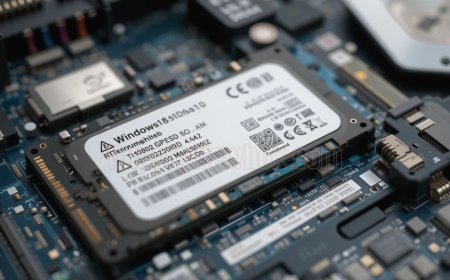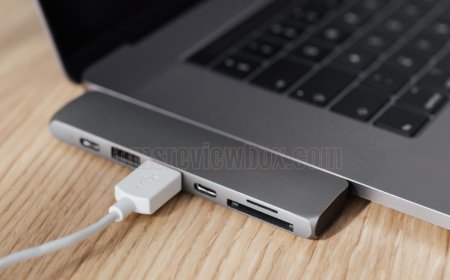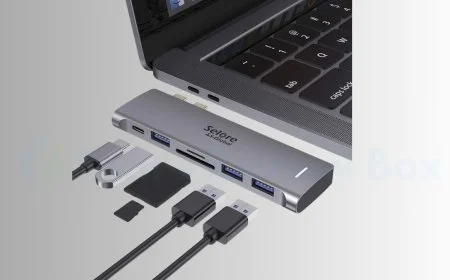How to Connect Your ASUS Laptop to Wireless Internet?
Learn how to connect your ASUS laptop to wireless internet effortlessly with our step-by-step guide and troubleshooting tips.

Key Takeaways
- Make sure your Asus laptop is turned on, that the WiFi is turned on, and that your network is up and running before you try to connect. Check these simple things first to save yourself some time and trouble shooting.
- Click the WiFi icon on the taskbar to scan for available networks and choose the right one. Make sure you have the right network name (SSID).
- Make sure to enter your WiFi password correctly without errors. Use the Show characters option to check what you’ve typed in before you try to connect.
- Tip 6 Keep your WiFi adapter driver and router firmware up to date for the best wireless experience. This will help you avoid connectivity issues due to older software.
- Set your laptop near the router and reduce interference from other electronics. Better, more powerful signals mean faster, high-quality connections that are more dependable.
- If you still can’t connect after using the above steps, power cycle your router and laptop. Surprisingly, this quick fix usually takes care of any passing bumps in the network.
Then, turn on the Wi-Fi on your Asus laptop. Next, select your network from the list of detected networks to connect to Wi-Fi. Since most Asus laptops have Wi-Fi adapters already built-in, the process of getting connected is quick and simple.
First, ensure your Wi-Fi is on by using the keyboard shortcut, typically Fn + your Wi-Fi symbol key. You can turn it on through the Windows settings. Next, click on the network icon in the bottom taskbar, select your new Wi-Fi network, and enter the password if prompted.
Now that you’re connected, you can start using your wireless internet to surf, stream, game, or work from anywhere. Follow these simple steps to quickly connect your Asus laptop to any wireless network within range. Have fun surfing the net without bulky additional equipment!
Preparing to Connect to WiFi
Before connecting to WiFi on your Asus laptop, addressing potential wireless connectivity problems early on is crucial. This first step can save significant time and help prevent frequent internet issues and network connection issues.
Check if WiFi is Enabled
To start, make sure that WiFi is turned on on your device. Most Asus laptops include a physical switch or function key to turn on and off Wi-Fi. Search for the WiFi or antenna icon for quick identification.
Slide the switch or press the key so that wireless connectivity is enabled. If your laptop lacks a physical switch for WiFi, you might need to toggle the WiFi adapter through the operating system settings menu. Open Control Panel or Settings, depending on your Windows version, and make sure the adapter is enabled.
For a deeper inspection, search Device Manager and make sure the WiFi option is turned on. If you’ve recently installed new drivers, this step is even more important. Driver compatibility issues between Wireless and Bluetooth drivers can break functionality.
Turn on WiFi on Asus Laptop
If function key doesn’t work, use the keyboard shortcut, usually Fn + F2, to turn on WiFi. After you enable it, the WiFi icon in your taskbar should glow. If the icon still isn’t working, ensure that your device drivers are updated.
At other times, hardware or software settings will require some tweaking, and Microsoft’s online resources are an excellent place to find more troubleshooting advice.
Verify Wireless Network Availability
Select the WiFi icon in your computer’s taskbar and choose the option to See what available networks there are in range. Make sure your chosen network is showing on the list.
If not, your network might be hidden and you’ll need to enter it manually. Check that the network is up and running by checking the router or contacting your Internet service provider.
Step-by-Step Guide to Connect
The process of connecting your Asus laptop to a reliable wireless network connection is pretty simple, and it will help you avoid common internet issues. By following the steps below, you can get connected quickly without making these frequent mistakes.
1. Open Network Settings on Laptop
First, start by finding the WiFi icon on your taskbar. Click on it and choose “Network Settings” from the menu. This will take you to a window where you can control your laptop’s internet connections.
If you require more advanced control, head over to the “Network and Sharing Center.” Need help locating it on our site? An easier shortcut would be to use the search bar on your laptop to type in “network settings.
Make sure you’ve installed the latest BIOS, Windows version, and drivers for your laptop as well. Taking these steps will improve your stability and keep you from falling into problematic territory.
2. Select the Desired WiFi Network
After entering the network settings, check the available WiFi connections. Pay attention and select the right network name (SSID) to prevent connecting to an imposter.
If you’re connecting in a place like a coffee shop, for instance, make sure the SSID is the same as what the venue has given you. Check for a lock icon.
A lock symbol next to the Wi-Fi network name means you have a secure connection, which will ask for a password.
3. Enter the Network Password
When prompted, carefully type in the WiFi password. Since password-protected networks often have long strings of random characters, “Show password” (if the option is available) is a good way to check your entry.
Once you’ve entered the password, click on “Connect” to continue. This step usually clears up connectivity in less than 10 minutes.
4. Confirm Successful Connection
Lastly, look at the WiFi icon in your taskbar. If it’s connected you’ll see either a solid bar or solid wave icon.
To test, just open any webpage from a browser to see if you can connect now. To learn more, see View the network status and tasks in the Network and Sharing Center.
If you still encounter problems, services such as JustAnswer can instantly connect you with expert, vetted technicians who specialize in troubleshooting.
Managing Wireless Network Settings
Correctly managing wireless network settings is one of the most important steps to ensure your ASUS laptop has a smooth internet experience. By adjusting WiFi settings and profiles, along with addressing any potential wireless connectivity problems, you’ll achieve greater connectivity and reliability.
Change DNS Server Address
To improve browsing speed and security, you can set a custom DNS server address. To get started, open up your network settings and go to properties on your WiFi connection. First, locate the area where you can input your desired DNS server IP addresses.
You can use Google’s Public DNS, which is 8.8.8.8 and 8.8.4.4 or choose Cloudflare’s DNS at 1.1.1.1. After entering the new values, make sure you save the changes and reboot your WiFi connection. Making this simple change can lead to improved load times and increased online security.
Reset Network Configuration
When things go wrong, resetting your network settings can return your device to its default configuration. Use the network reset feature, usually located in the advanced section of the settings menu. Follow the on-screen instructions to finish the process, clearing out current WiFi profiles.
After uninstalling, go back and connect to your original network of choice and re-enter any required passwords. This step is especially useful if recent modifications have caused connectivity issues.
Adjust Power Management Options
WiFi performance may suffer with power-saving options enabled. How to access device manager? Now you need to find your WiFi adapter settings. Turn off all power-saving features for the best performance.
Ensure your laptop stays connected even in sleep mode by changing power management settings in advanced options. For continuous problems, please attempt to change BIOS settings or execute System Diagnosis in MyASUS for additional troubleshooting.
Troubleshooting Connectivity Issues
If your Asus laptop experiences wireless connectivity problems and won’t connect to Wi-Fi, a few telltale signs can help you identify the issue. This includes low speeds, constant disconnects, or even failure to recognize networks. Properly diagnosing these internet issues up front saves time and helps deliver a more seamless experience.
Ensure WLAN AutoConfig Service is Active
Begin troubleshooting by looking at WLAN AutoConfig service. Then, open the windows services menu by typing “services” in the Windows search bar. Once in services, find WLAN AutoConfig, and make sure it’s started.
Configure it to run on startup to simplify future connections. If it isn’t running, a quick restart of the service usually takes care of any connectivity issues in no time.
Update WiFi Adapter Driver
Outdated drivers can cause all sorts of issues with your connection. Access the device manager by right-clicking the Start menu, then choose your WiFi adapter under “Network Adapters”.
Install the update or download the most recent version from the manufacturer’s website yourself. Once you’ve finished updating, restart your laptop to apply the changes.
Repair Corrupted System Files
Corrupted files can lead to connectivity issues. To use the System File Checker tool, open the command prompt as an administrator and type sfc /scannow.
Follow the on-screen prompts to fix any problems it finds. Surprisingly, this simple process frequently replaces missing or corrupted core system files necessary for connectivity.
Scan and Fix File Errors
Corrupted file system errors can contribute to connectivity issues as well. Repair Disk Integrity Using Error Checking Utility.
Use the built-in Windows convenience tool to Factory Reset. Open command prompt and run chkdsk /f, then reboot your laptop.
A new reboot goes a long way in testing the connection and making sure the fixes go into effect.
Additional Tips for Better Connection
Getting a stable and reliable WiFi connection on your Asus laptop requires a little more effort than simply connecting to the network. Here are some quick strategies and step-by-step instructions to get more out of your wireless service.
If you’re using a laptop, try sitting closer to your router to get a better connection. The closer you are to your router, the less likely you are to experience disruptions and lowered speeds. This is a major benefit when you’re trying to stream or download larger files.
If you have a very large area, consider using a WiFi extender to increase coverage. In residences with very thick walls or additional stories, WiFi extenders are key. They bridge the gap between your router and dead zones, so you can experience reliable coverage everywhere you roam.
Keep your router’s firmware up to date for optimal operation. Connectivity issues are common, so manufacturers typically release over-the-air updates to address the bugs. Look in your router’s settings menu for firmware updates.
Place Laptop Near Router
Don’t keep your laptop too far from the router. Walls, furniture, or appliances can block the signal, so try to choose a spot that is open and will allow for better connection.
Walk around your home or office to see where you get the most signal and choose that spot to connect.
Avoid Signal Interference
Even common household items like microwaves or cordless phones can disrupt WiFi signals. If you have a dual-band router, connect to the 5GHz frequency band instead of the standard 2.4GHz frequency for less interference and faster speeds.
Positioning your router on a high shelf in the center of your house allows signals to broadcast evenly in all directions.
Restart Router and Laptop
Rebooting your router will only clear network congestion, and restarting your laptop will only fix temporary glitches.
Once rebooted, ensure that the Wi-Fi icon is blue after the reboot, which means connected.
Conclusion
Connecting your ASUS laptop to wireless internet isn’t an intimidating task. With a straightforward installation, a few minor tweaks and some quick-fix tech support when necessary, being connected is easy and worry-free. From selecting the ideal network to maximizing your speed, each move sets the stage for uninterrupted browsing.
Focusing on the finer points will make a massive difference in performance. For example, ensuring you have the latest drivers and are properly managing your network settings are all essential. If you do run into an issue, the solutions are usually pretty simple and manageable.
Taking these steps ahead of time will help make sure you have the stable connection you need for work or play. Continue to engage and savor the comfort WiFi adds to your everyday life. Have other questions? Read on to discover additional advice to continue sharpening your talent!
Frequently Asked Questions
How do I connect my ASUS laptop to WiFi?
Select the WiFi icon in the taskbar to troubleshoot any potential wireless connectivity problems. Choose your network, type the password in, and hit “Connect,” ensuring that your WiFi settings are properly configured for an easy setup.
Why is my ASUS laptop not detecting WiFi networks?
Ensure your WiFi is enabled and check your wifi settings. Restart your laptop and your wifi router to address any potential wireless connectivity problems. Updating your network adapter drivers can help detect issues most of the time.
How do I update the WiFi driver on my ASUS laptop?
To resolve wireless connectivity problems, search for 'Device Manager' in the search bar, locate 'Network Adapters,' right-click on your wireless network adapter, and choose 'Update Driver.' Follow the on-screen prompts to finish the update.
Can I connect my ASUS laptop to WiFi manually?
Yes. Navigate to your wifi settings by going to 'Network & Internet Settings,' click on 'WiFi,' then 'Manage Known Networks,' and finally 'Add a Network.' Type in your network name and password to resolve any potential wireless connectivity problems.
Why does my ASUS laptop keep disconnecting from WiFi?
A weak signal or outdated drivers may be to blame for your wireless connectivity problems. Try moving closer to the wifi router, updating the network adapter driver, or forgetting the network and reconnecting.
How do I turn on WiFi on my ASUS laptop?
Hold down the “Fn” key and then the WiFi (F2 or whatever) key to resolve any wireless connectivity problems. Alternatively, go into 'Network & Internet' settings to ensure WiFi settings are correctly configured.
What should I do if my WiFi password is incorrect?
Re-enter the password to ensure it’s correct, checking that caps lock isn’t on. If you’re still facing wireless connectivity problems, try rebooting your wifi router or reach out to your internet service provider for assistance.
What's Your Reaction?







































![MacBook Pro M5: All the features and specs you need to know [LEAKS REVEALED]](https://tomsreviewbox.com/uploads/images/202502/image_430x256_67bd6d7cd7562.jpg)


























